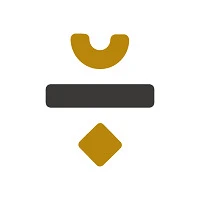Choosing the right cotton fabric is crucial for creating durable and comfortable products. High-quality cotton not only feels better against the skin but also holds up to repeated wear and washing. But with so many options available, how can you determine the quality before you buy fabric?
This guide provides a straightforward look at the key indicators of superior cotton. We will cover the essential factors, from thread count and fiber length to weave types and certifications. Understanding these elements will enable you to make informed purchasing decisions for your fashion brand or personal projects.
Understand Thread Count
Thread count is often the first metric people consider when assessing cotton quality. It refers to the number of threads woven into one square inch of fabric, counting both lengthwise (warp) and widthwise (weft) threads. While a higher thread count can indicate a denser, more durable fabric, it is not the only measure of quality.
A common misconception is that the higher the thread count, the better the fabric. However, this is not always true. Some manufacturers inflate thread counts by using multi-ply yarns, which are thinner, weaker threads twisted together. A fabric made from single-ply, high-quality yarn with a thread count of 200-400 can be superior to a fabric with a supposed 800 thread count made from lower-grade multi-ply yarns.
For most apparel and bedding, a thread count between 200 and 600 is a reliable range for good quality. Anything significantly higher may feel less breathable. Look for a balance between thread count and other quality factors.
Check the Fiber Length
The length of the individual cotton fibers, known as staples, is one of the most important determinants of quality. Longer fibers can be spun into finer, stronger, and smoother yarns.
Short-Staple Cotton
Short-staple cotton fibers are typically less than 1 1/8 inches long. They produce yarns that are weaker and have a rougher texture. Fabrics made from short-staple cotton are more prone to pilling and have a shorter lifespan. They are generally less expensive and are used for a wide range of everyday items where durability is not the primary concern.
Long-Staple and Extra-Long-Staple Cotton
Long-staple cotton has fibers between 1 1/8 and 1 1/4 inches, while extra-long-staple (ELS) cotton fibers exceed 1 3/8 inches. These longer fibers result in a much stronger, softer, and more lustrous fabric. They are also more resistant to pilling and fraying, ensuring the finished product lasts longer. When you buy fabric, looking for long-staple varieties is a good indicator of high quality.
Examine the Weave Type
The way the cotton fabric is woven affects its texture, appearance, and durability. Different weaves are suited for different purposes.
Percale
Percale is a plain weave with a matte finish and a crisp feel. It is made by weaving one thread over and one thread under, creating a tight, lightweight, and breathable fabric. High-quality percale is durable and becomes softer with each wash. It's an excellent choice for warm climates or for people who prefer a cooler feel.
Sateen
Sateen uses a different weave structure, typically one yarn under and three or four yarns over. This construction places more threads on the surface, creating a fabric with a noticeable sheen and a silky-smooth feel. Sateen is generally heavier and less breathable than percale but offers a warmer, more luxurious texture.
Twill
Twill weaves, such as those found in denim and chino, are characterized by a diagonal rib pattern. This structure makes the fabric very strong and durable. It also drapes well and is less prone to wrinkling than plain weaves.
Consider the Country of Origin
While high-quality cotton is grown worldwide, certain regions are renowned for producing superior fibers. The climate and soil conditions in these areas are ideal for cultivating long-staple and extra-long-staple cotton.
- Egyptian Cotton: Grown in the Nile River Valley, Egyptian cotton is famous for its extra-long staples, which create exceptionally soft and durable fabrics.
- Pima Cotton: Primarily grown in the southwestern United States, Pima cotton is another extra-long-staple variety known for its strength and softness. Supima® is a licensed brand of American Pima cotton that guarantees its origin and quality.
- Sea Island Cotton: This is a rare and highly-prized ELS cotton grown in the Caribbean. It produces some of the most luxurious and softest cotton fabrics available.
While origin can be a marker of quality, it's also important to verify authenticity, as some products may be mislabeled.
Look for Certifications
Certifications provide an independent verification of a fabric's quality and production standards. They offer assurance that the product meets specific criteria related to its materials and manufacturing process.
GOTS (Global Organic Textile Standard)
GOTS is the leading global standard for organic fibers. A GOTS certification ensures that the cotton fabric is at least 70% organic and that the entire production process, from harvesting to manufacturing, adheres to strict environmental and social criteria. When you buy fabric with a GOTS label, you are choosing a product that is both high-quality and responsibly made.
OEKO-TEX®
The OEKO-TEX® Standard 100 is another important certification. It tests for harmful substances in textiles. If a fabric is OEKO-TEX® certified, it means every component has been tested and found to be harmless to human health. This is a valuable indicator of a safe and well-made product.
Make Informed Fabric Choices
Selecting high-quality cotton fabric requires looking beyond a single attribute like thread count. A comprehensive evaluation of fiber length, weave, origin, and certifications will give you a much clearer picture of a fabric's true quality. By paying attention to these details, you can ensure that the fabric you purchase will result in premium, long-lasting products.
Ready to find the right material for your next project? Explore our selection of high-quality cotton fabrics designed to meet the needs of modern fashion brands.


